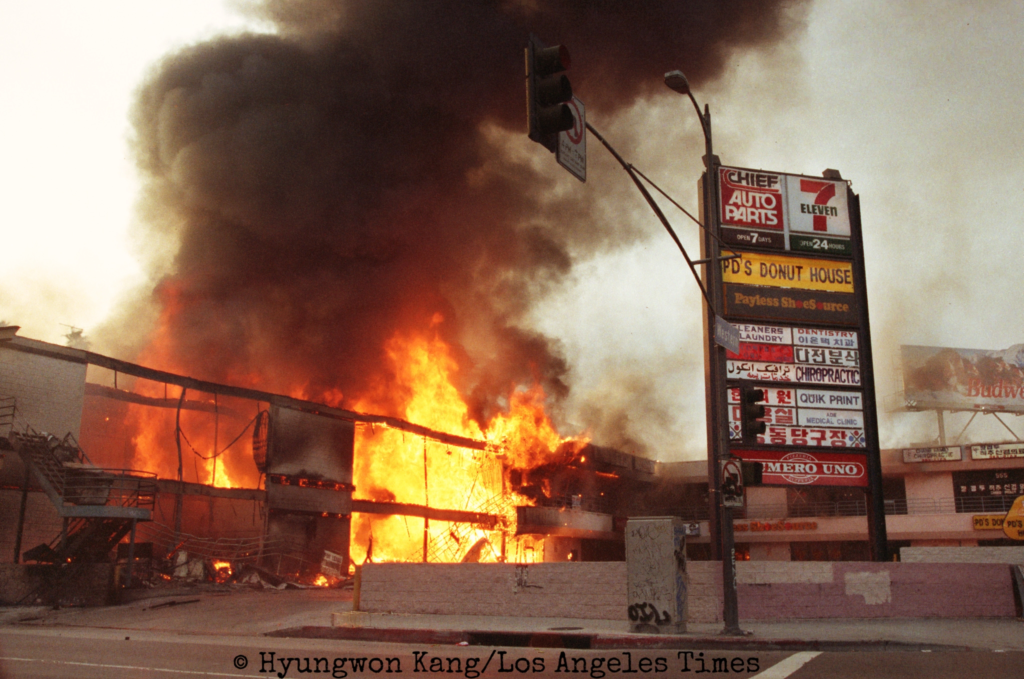I wrote about Koreatown in 2015 for KCET.

At the turn of the last century, Korean immigrants began settling into Bunker Hill, one of the few neighborhoods designated for non-whites, on the western edge of downtown Los Angeles.

When the Korean United Presbyterian Church was established further south on Jefferson Boulevard in 1905, the Korean community began to grow around the church, unofficially establishing the area into “Old Koreatown.”
The Korean American community in Los Angeles continues to preserve our history here and the legacy of independence leader Dosan Ahn Chang Ho. A few years ago, I was asked to support getting historic designation for one the properties Dosan Ahn Chang Ho and The Young Koreans. We were successful. By the way Phillip Cuddy, Dosan Ahn’s half white grandson, tried to stop us. We found Phillip to be an entitled meddling jerk. His grandfather’s legacy is for the Korean people. It’s not about his ego and pettiness. Phillip insisted that a group of Korean Americans listen to gossip about his grandfather and his family. We shouted back, “We don’t give a shit! Shut up.” Contrary to what Phillip says in public, he is full of racial self-hatred and loathing for other Koreans including his own family.
As racially restrictive covenants began to decline over the decades, Koreans began moving north to Olympic Boulevard. By the early 1970s there was a cluster of businesses catering to a fast-growing Korean population.

In 1971, a Korean immigrant named Hi Duk Lee purchased five blocks of real estate near Olympic and Normandie, opening Olympic market with a grand plan to have Koreatown’s architecture rival Chinatown’s. He imported tiles for VIP Palace restaurant which he opened in 1975. He then built the Korean Village Shopping Center; the cluster of businesses he started are considered to be the foundations of contemporary Koreatown as we know it. To solidify his investment, Lee spearheaded the campaign to have Koreatown officially designated and in 1980, L.A. acceded with a sign that said “Koreatown”.
Today, Koreatown encompasses a 2.7-square mile. Virtually every style of major 20th century American architecture is represented here. It’s also home to the most neon signs, densely packed strip malls, valet parkers, and Korean restaurants in all of L.A. County. The majority of the residents here are Latino, but Koreans are still the largest group by single national origin. Wilshire and Western is the new center of Koreatown.

1992 forever changed the course of Koreatown and Korean Americans. What started in South Central LA as an unorganized uprising became a chaos of rioting, looting, and arson in Koreatown. On the surface it looks like Koreatown was rebuilt. But it wasn’t rebuilt for many of the mom and pop business who suffered tremendous or total losses.
David Lee of Jamison Properties began buying distressed properties in 1992. Some say he and his real estate company own over half of Koreatown. What mainstream or white media don’t know is the Lee is the most hated landlord in Koreatown. Venmously hated. His poorly maintained, broken down office buildings are famous. He is also ruthlessly brutal with his tenants. He is known among Korean Americans as the king of shady evictions. Lee has made massive contributions to Koreatown becoming unaffordable for low-income Koreans and mom and pop Korean business owners.
Lee famously avoids media attention. The Korean press are not kind to him. What would be the point of Lee doing a lifestyle spread considering how much he’s hated in Koreatown?
Lee’s three adult children aren’t as press shy. They pivoted the family real estate empire from offices to multifamily residential buildings. They claim to white media that they helped tenants relocate. This isn’t true. Jamieson is the most hated residential landlord as well. The company is responsible for these overpriced and largely empty monstrosities in Koreatown.
The Lee family’s legacy will be “The Family Who Destroyed Koreatown for Koreans.” Koreatown is the least green space in all of LA County. We have the fewest parks and canopy trees (shade). Careless development and poor urban planning are to blame. This is what you have underneath the splash, flash, and “hipness” of Koreatown.

LA’s Koreatown is booming for David Lee, real estate developers, and corporations. It’s not booming for the rest of Korean Americans and it’s become uninhabitable for many low-income Koreans.
To be continued